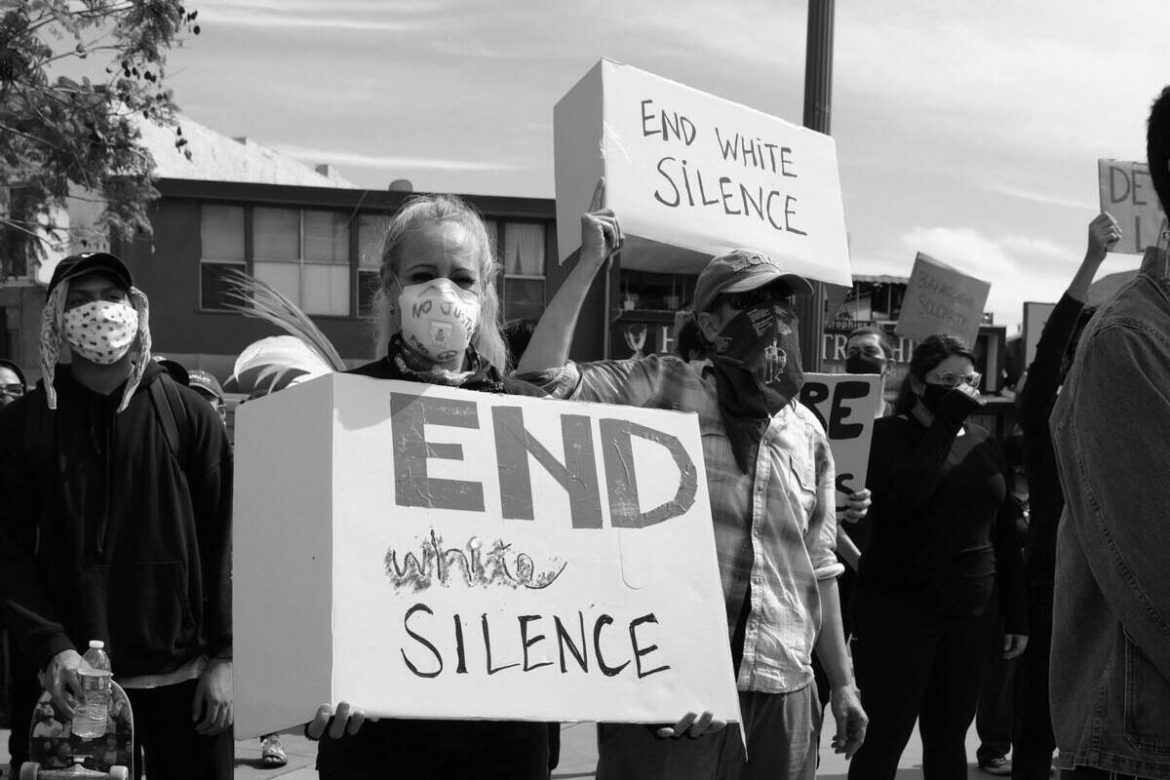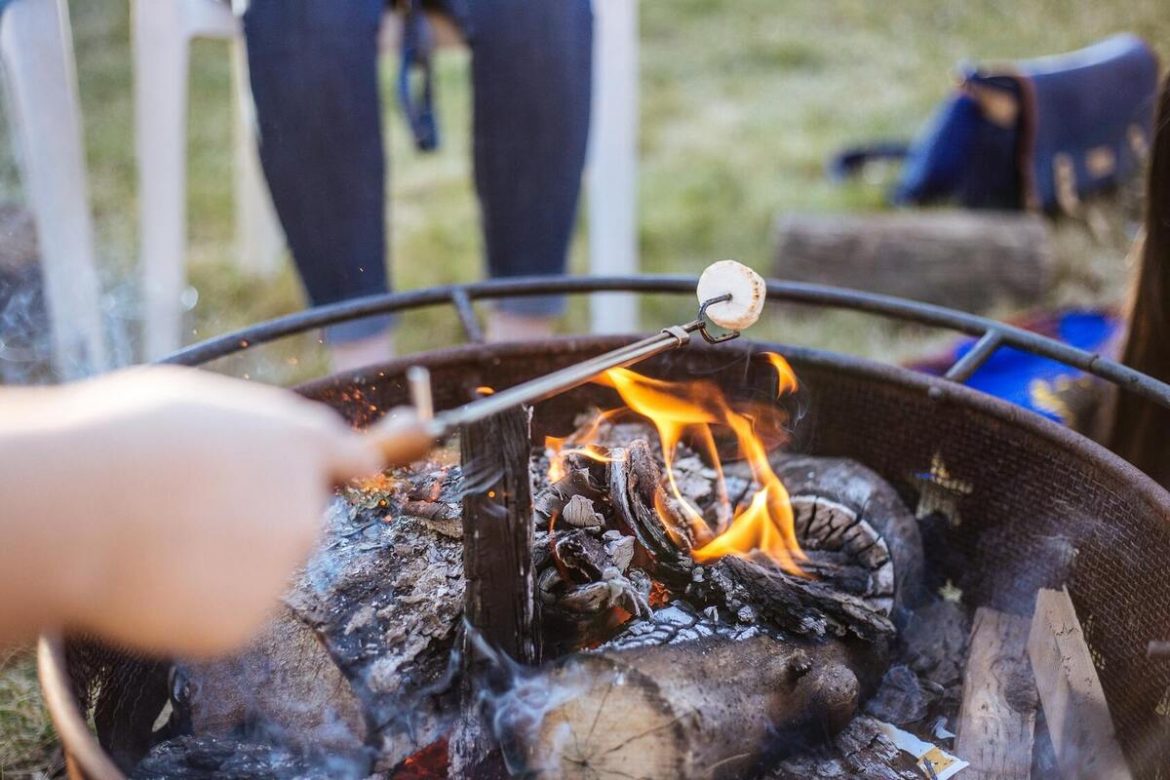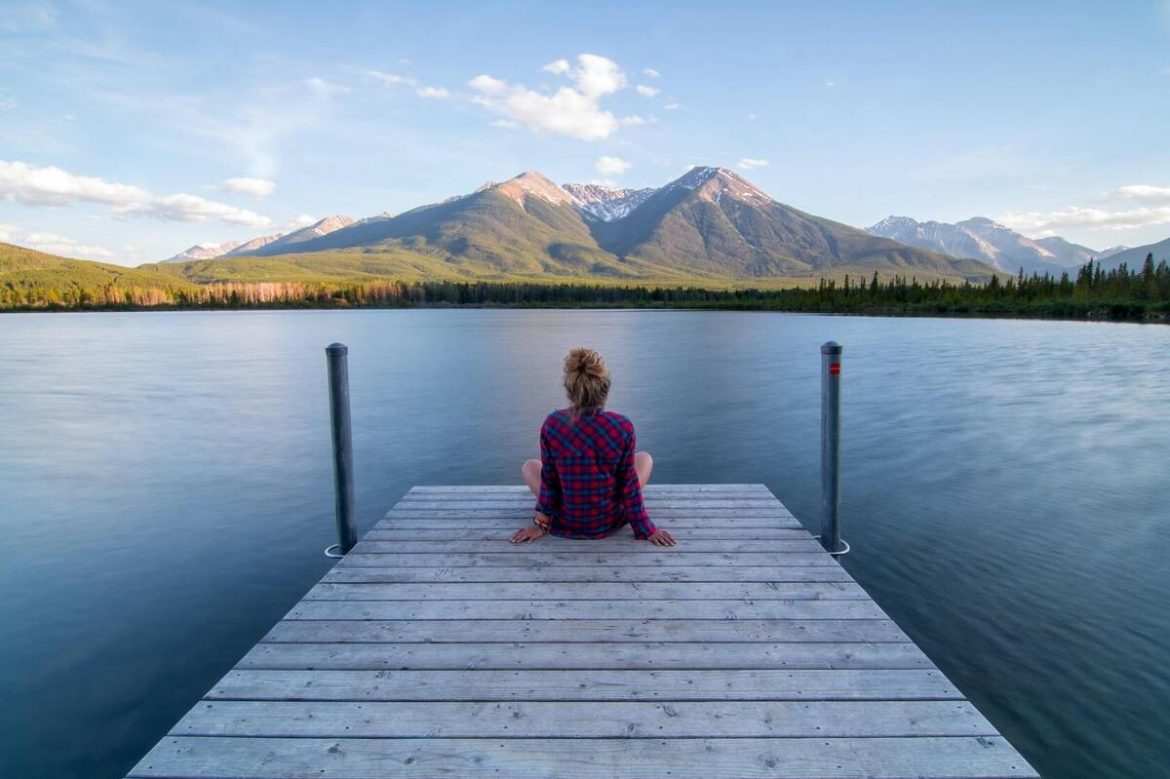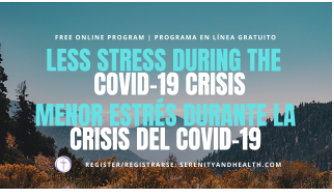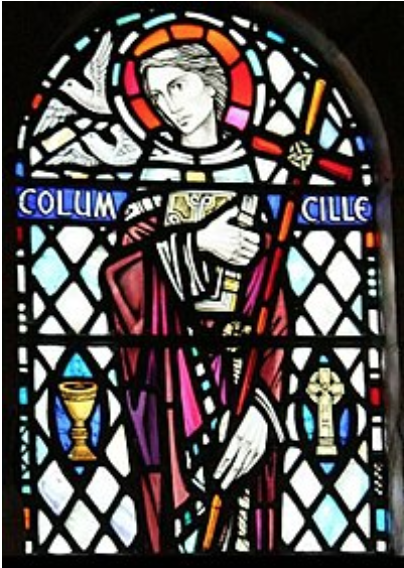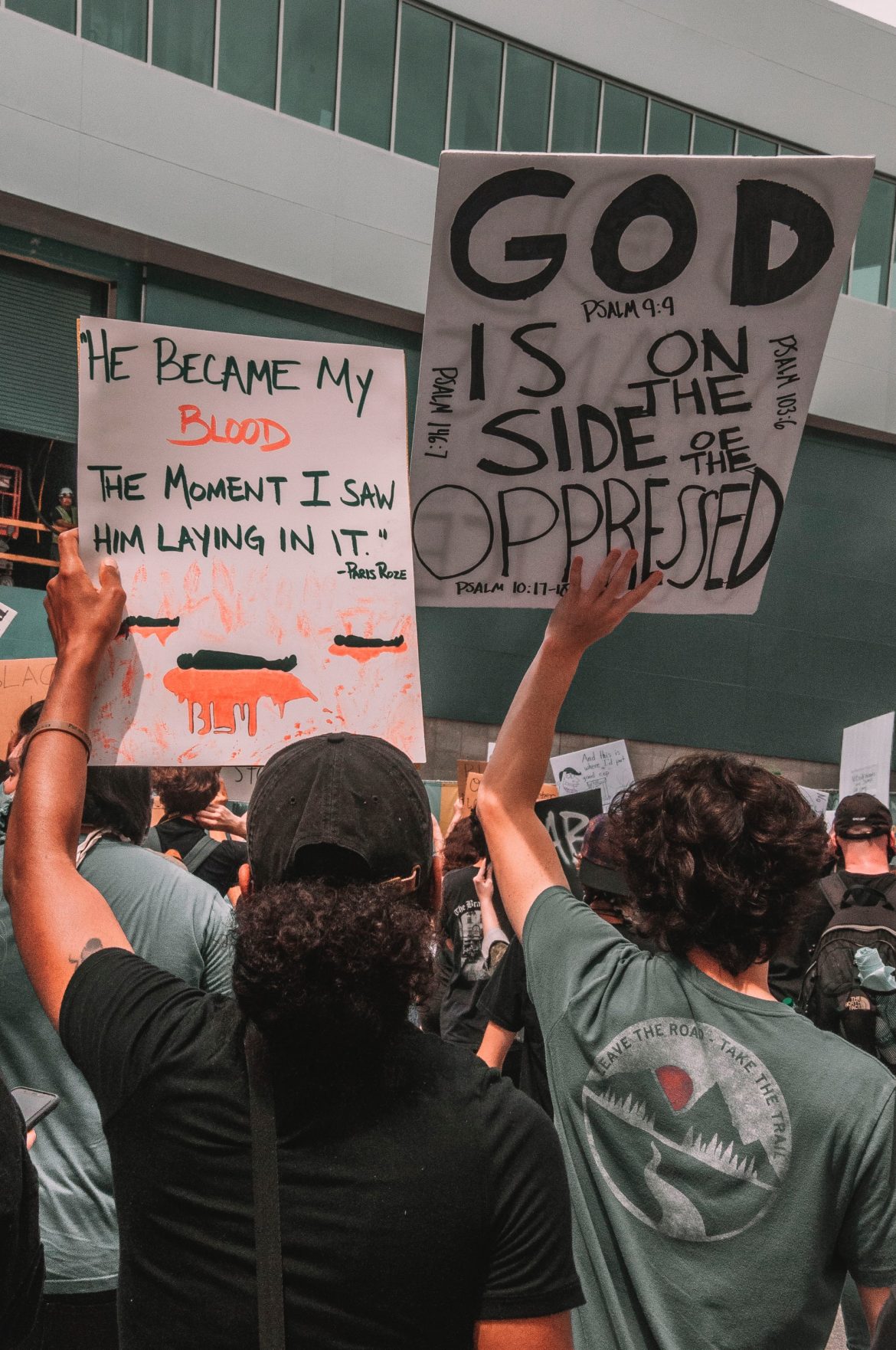by Tom Sine
In my post last week, I invited you to meet and celebrate the decision by the Evangelical Covenant church in 2000 to become a multiracial church. What I didn’t tell you is that for the leaders of the Covenant Church, one of their major influences for embarking on the journey to create a multiracial church was Jim Wallis, editor of the Sojourners Magazine. I am not surprised since Sojourners has given more voice to authors of color and those advocating more for racial justice in society and the church than any other Christian magazine I have found.
Part of the reason for that advocacy is that Jim Wallis was kicked out of his church as a 15 year-old because he became an activist in the early expressions of the civil rights movement. That was, in fact, part of his motivation for starting Sojourners Magazine. It has been a major influence in my life.
When Jim came to Seattle in 2017 to share about his new book, America’s Original Sin, I went to listen to him. His presentation was moving but his book was more convicting than any book I can remember reading; waking us up to the widespread and destructive nature of racism in America.
It is still, in my opinion, the most important book written by a white Christian author for white Christians to read to discover how we can become more positive members of the interracial community in America and the interracial community of the followers of Jesus that reach around our troubled world as we all grapple with this new destructive global pandemic.
In the June issue of Sojourners, Jim Wallis’ editorial is “Learning to Love is Crucial for our Survival.” This issue also includes an article titled, “Finding Hope in ‘The New Dark Ages’’’, that reconnects to the hopefulness of Dr. Martin Luther King Jr.
Now I want to take you back to some of my earliest encounters with the Covenant Denomination as it began its journey towards becoming a multiracial denomination in the early 2000s, which I presented in my last post. Remember their primary strategy for creating a hope filled future was by starting an aggressive program of planting multiracial churches.
One of the first Covenant new church planters was Pastor Efrem Smith. He became the founding pastor of Sanctuary Covenant Church in a multiethnic congregation in North Minneapolis. Christine and I got to know Efrem because his travels often brought him to Seattle. In fact, we were able to secure Efrem Smith as a keynote speaker at a conference in the early 2000s on the challenging topic of how to prepare for a richly multiracial future in America.
It was a very powerful wake up call for a primarily white audience. Efrem is the the author a book that can help us on the journey: The Post-Black and Post-White Church: Becoming the Beloved Community in a Multi-Ethnic World.
Recently Efrem Smith, who is now the co-pastor of a large interracial Bayside Church, Midtown in Sacramento, CA, wrote on Twitter: “Another unarmed African American killing. This time in South Minneapolis in the neighborhood where I grew up. The heartbreak continues. I shouldn’t have to fear for my life because of the color of my skin.”
Bob Smietana of Christianity Today asked Efrem Smith in their June/July issue to address racial issues in America. He asked, “What kind of response have you seen from faith leaders?” Efrem responded, “Those that have been involved in ministry that includes initiatives of justice and reconciliation—the response has been consistent: a call for justice, the call for love, a call for reconciliation, a call for changes through public policy… But then there’s also a significant segment of evangelicalism that is either silent or late to the party when it comes to the church calling for justice.”
Efrem Smith stated, “Evangelicalism needs a more humble posture of receiving and learning. Allow the church that has been deemed the other, the marginalized church, to be the teacher at this moment, and to have the most dominant form of the church in America be the student who is learning to share power.”
How can white followers of Jesus end white silence?
PRE-ORDER~ Tom Sine and Dwight Friesen’s book called 2020s Foresight: Three Vital Practices for Thriving in a Decade of Accelerating Change will be released in September 2020 by Fortress Press.

Please note, we receive a small commission if you order from this page.
by Lisa DeRosa
“Social distancing” – two words that are both a benefit and a curse.
We were created for connection with people and yet, the physical connection in this time is dangerous. The effects of “social distancing” have kept people safe and decreased the spread of the virus and flu, but has also increased isolation of people, created in God’s image to be in community with one another. After 3 months of stay home, stay safe, I feel the effects of “social distancing”. Trips to visit family and friends were cancelled and I cannot foresee when I will travel again. I am grateful that I and my housemates are safe and that we do live in a community so we are not alone. But I have become weary of not meeting with my church family, my blood relatives, and having friends in my home.
As we continue to stay home and stay safe to protect and care for others, to keep ourselves, our medical workers, janitors, and other essential workers safe, I want to branch out from my weariness, from my lack of connection, and think of creative ways to safely be present with my friends by “distant socializing“. Not on a screen. For my mental and emotional health, I need this switch from “social distancing” to “distant socializing”. This reduces my tendency toward fear and isolation to connection and creativity. The social norms of Happy Hour after work, going to the movies, or grabbing dinner at a restaurant together are not doable right now in Seattle. Activities together look different. Last weekend, my husband and I drove to Chick-fil-A to get lunch with our Life Group leader. It was pouring rain, so he stayed in his car with the window rolled down and we sat in our hatchback trunk facing each other to enjoy lunch “together”. It was the most life-giving interaction with a friend we had had all week.
This post, Seeing Differently as a Way of Life, was helpful as I have pondered this next season ahead. As we move into summer here in the northern hemisphere, the possibilities for “distant socializing” greatly increase! We want to share ways to connect with family and friends that is safe and respectful of each other’s physical space but breathes life into our much needed relationships! This NPR article also helped me discern what safe practices could be possible for this summer. For our southern hemisphere readers, we have included indoor activities too! Please share what ideas you have with us!
Outdoor Ideas
- Gardening:
-
- Create a Gratitude Garden – invite others to bring their own supplies and make one with you
- Resources for starting a garden – websites and books to help get you started, ask a friend to help too
- Tips for Community Gardens during COVID – BC Centre for Disease Control provided this very helpful guide!
-
- Walking Barefoot Through the Neighborhood by Andy Wade – walk with another person to share in this experience
- The Spiritual Practice of Going Barefoot – connect with the ground while you connect with a friend
- The Practice of Play by Lilly Lewin – great ideas from Lilly, most of which can be done at home or safely in your neighborhood
- The Spiritual Practice of Beach Combing – if you live near a beach, lake, or any water, this can be a great way to venture outside safely with others
- Awe and Wonder Walks – point out the beauty you see to someone when you go for a walk
- The Delight of Walking in the Rain – perfect for the Pacific North West and other rainy places
- Lectio Tierra – great practice explained by Andy Wade
- Fire pit hang out – roast marshmallows or sausages over the fire while keeping distance
- Ideas for kids – 10 ways to help kids get outside while living in the city
- Prayers of a Different Sort: A Children’s Prayer Book – prayer walks, labyrinths and more!
- Backyard games – we like to play croquette, catch, and disk golf in our backyard but here are so many games you can play outside!
Indoor Ideas
- Knitting as a Spiritual Practice by Lisa Scandrette – sit farther apart, but still within chatting distance! Knit items for your local charity of choice to bless others in need
- Spirituality of Gardening Online Course – sign up with a friend to talk about the material together
- Divine Doodling – such fun to see what creative drawings come from this practice – ask others to join you!
- Gift of Wonder Online Retreat – creative retreat experience for at home use
- Gratitude Scavenger Hunt – a reflective activity for indoors or outdoors
- Painting Leaves – I love this activity, the Mustard Seed House did this last fall and we all really enjoyed it
- Finger Labyrinth – lovely contemplative practice, great to make with others and use together or by yourself
- Colourful Me – great for kids who love to colour and let their creativity shine!
What other ideas do you have that we should add to this list?
by Donna Chacko
The Covid-19 pandemic has created stress, suffering, and uncertainty for all of us. Maybe you are lonely, concerned about your future or your elderly parents. Or, you are furloughed, trying to work from home, or crowded in a small space with antsy children. Maybe you are facing challenging financial pressures or risks because you are an essential worker serving the rest of us. Maybe you are grieving. Add to this the concerns we all have about how best to reconnect and reopen.
I suspect we’ve all experienced what happens when we stay up in our heads endlessly searching for answers to the many unanswerable questions of our day —it feels lousy and creates stress. My message is that there are steps you can take to feel better, reduce your stress, and be closer to God, as a package deal.
Chronic Stress

photo from upsplash.com
During my forty years practicing medicine, I came to see the power of stress to ruin health and happiness. 60-70% of office visits are in some way stress-related. Stress either causes or aggravates many chronic health problems like high blood pressure, heart disease, diabetes, headaches and pain.
Stress can impact every part of us—our minds, bodies, and spirits. It disrupts how we think, shows up as physical ailments, and distracts us from connecting with God. Sadly, chronic stress is a baked-in ingredient of our modern lifestyles— even before the pandemic. I knew there had to be a way to help people avoid the unnecessary stress and suffering that I witnessed during my career as a physician and in my own life.
Finding Serenity and Health
After retiring, I started a program at my church called Serenity and Health to encourage myself and others to take control over their own health by making better choices, even if by one tiny step at a time. I emphasize the role of mind, body and spirit interactions when it comes to health. For example, relaxing your body will quiet your mind, quieting your mind will relax your body, and trusting Jesus will reduce your stress.
Through Serenity and Health, I’m now able to offer free online and in-person programs, self-study resources, and a monthly blog to help you to feel better, act better, and walk closer with God. One of the themes that I frequently address in my blog and program is faith-based stress management.
Free Stress-Reduction Program
I’d like to invite you to try our free online program that is taking place right now: Three Keys to Less Stress During the Covid-19 Crisis. The program is completely online, is self-paced, and comes with a downloadable journal for you to keep. In three sessions, we’ll identify your stressors and practice deep breathing; the link between your faith and your health; and find ways to introduce simple healthy habits into your daily life. You can start the program as soon as you register, and I’ll be available by email for questions throughout the program.
Register Here and Receive Your Journal
Thank You
I want to express my sincere gratitude to Dr. Sine and the Godspace team for giving me this opportunity to share my program with you. I am honored and humbled to be a Godspace writer. Take some time and review the brief bios of this community. They are a loving, giving, and talented lot.
God bless all of you. I would love to hear from you
Donna Chacko, M.D.
by Carol Dixon
When I was young we had a large red leather bound book on our bookshelf. It had very few illustrations and all of them were weird pencil drawings which made a great impression on me as a child. It was a book of folk tales from around the world and I remember my mother reading me a strange tale from the ancient annals of Ireland which went something like this.
‘The hordes gathered on the battlefield and facing the enemy the Prince realised that they were far outnumbered. But right was on his side. No-one would take this away from him despite the strict instructions from the High King that no battles would take place while he ruled. Choosing to ignore his overlord the Prince attacked and the carnage that ensued was terrible. with many losses on both sides. Afterwards came the reckoning. Summoned by the High King the Prince knelt before the throne to hear the judgement. ‘You are banished never to return to these lands in your lifetime on pain of death. You will be cast adrift to wander the seas as a homeless felon until you find a land that will accept you. Go, and may the Lord God have mercy on your soul.’
The Prince and his small band of followers made ready and set off with few possessions. As he looked back at his country receding into the distance the Prince wondered what the future held. His life was in the hands of God.’ The first place they landed was inhospitable without enough resources to support life. In other places they were chased away by suspicious locals. The Prince and his companions found themselves on the turbulent sea once more. At a loss he cried out to the elements ‘Give us sanctuary, we pray’ That night in a dream he found himself kneeling before another throne – bowing low before the High King of Heaven who commanded him ‘Go, and set up my kingdom in the place I will show you. Speak to the heathen in my name and share my love with all the world. [from The legend of St Columba]”
This rather fanciful story of the early years of St Columba does include a few elements of truth. Columba was of high birth and did slaughter a number of people in a battle. What it doesn’t say is that he was already in holy orders and his ‘enemy’ was a fellow cleric with whom he had quarrelled over possession of a manuscript of the Gospels! Not an auspicious start for sainthood. Whatever the real truth, as we know Columba finally landed on the small Isle of Iona off the west coast of Scotland and following the instructions he had received from God, began setting up a new kingdom dedicated to God and the rest as they say, is history. He had a great influence on converting the Picts and the holy place he founded on Iona changed the history of Scotland and stretched even as far as Northumbria in the 7th century with the coming of Aidan at the request of King Oswald who had been educated at the abbey of Iona.
But what have these far off stories to say to us today in the 21st century? Andy Raine from the Northumbria Community in his article ‘A space has been cleared’ has this to say about St Columba and his influence today.
‘Columba came to Iona a very broken man. He had a back story. Most people have. It was a significant place which also had a back story of its own. It was a primeval place prepared before our time began. And Columba’s brokenness was a useful corrective to his unflappable self-confidence. He became less concerned with being right, more given to being open and could more easily access a depth of compassion. Columba and Iona were about to collide and a whole lot of healing would go on, and a whole lot of loving would emerge to surround the world. Columba’s voice had a distinctive sound and it could be heard distantly from far away. He sang from a heart that had been broken. He had learned to embrace the place of exile and discreetly to whisper ‘You are altogether beautiful, O you of my heart’ and the sound is still echoing.’
In our times of isolation and exile may we still hear echoes of his voice, praising God across the ages, and may God give us the courage to join in the song of love until it resonates across our world in our time.
The hymn ‘O God thou art the Father’ is attributed to St Columba and is set to the old Irish tune Durrow:
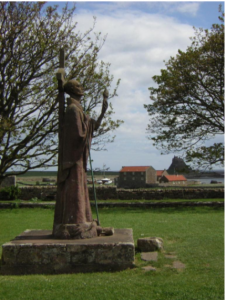
Statue of St Aidan Lindisfarne by Carol Dixon
I am fortunate to live near the beautiful Holy Island of Lindisfarne which I visit regularly (when we are not in lockdown). I have written a few Holy Island hymns & the hymn below was written after my first (& only) visit to Iona but it works well on Holy Island too. I chose the tune St Columba. I hope you enjoy singing it on St Columba’s Day.
1 We draw apart from busy life
to set aside some space
and see afresh with open eyes
the beauty of this place.
2 We glimpse each separate grain of sand,
gold glistening on the shore,
and hear the haunting seagulls’ cry
above the breakers’ roar.
3 Each quivering blade of grass reveals
the glory of God’s earth;
in laughter’s lilt, compassion’s tear
the Spirit brings new birth.
4 We join with all creation’s choir
and sing of God’s domain,
the love of Christ in empty hearts
now raised to life again.
5 Refreshed in body, mind and soul
we return to daily round,
our eyes and ears attuned to God,
to serve with love new found.
© Carol Dixon
by Christine Sine
Like most of us, I have just gone through a very harrowing week of pain and guilt and, at times, confusion. I have felt overwhelmed not just by the horror of what has been uncovered but by the incredible response around the world to the deep rooted injustice in our society. I am very aware that I am a white woman with privilege and power. I have had the privilege of a university education. I live in a predominantly white middle class neighborhood, Ian financially well off, I am respected because I am a physician. All of these factors give me privilege that I can easily brush over and take for granted.
So how do we respond?
Calm Your Mind
First, by calming my mind and my heart so that I am receptive to the possibility of change and open to the wisdom and instruction of those around me who are far more conversant with the situation and how best to respond than I am.
My own outward response has been slow, partly because I wanted to process my own inward journey and discern how to respond. This prayer was my initial response:
I weep
My friends weep,
God weeps.
My heart is filled with pain.
Black lives matter.
Too many cut short
By violence,
By virus
By injustice.
Black lives matter.
What will we do
To stop the deaths.
To bridge the gaps.
To hear the voices that cry out for life.
Black lives matter,
But do they matter to us?
Then I was sent a link to this special contemplative service hosted at Cedar Park Church in Delta B.C. , by my good friend Tom Balke. Through song, image, prayer, and candles we were invited to hold our hearts open to God and to the devastating impact of racism. At the beginning the pastor Lee Kosa, shows a photo of a sign from a protest in Vancouver B.C. that said “We cannot retreat to the convenience of being overwhelmed”. As he says, when we are tempted to shut down contemplative practices encourage us to open up our hearts, our minds and our actions to respond in appropriate ways. And that is what I felt this service helped me to do.
Listen Prepared to Change
As I watched the service I was reminded of a gathering I was at many years ago with the Native American activist and evangelist Richard Twiss. Talking to the white people in the group he said: “We don’t want you to invite us to sit at your table, we want to create a new table together.” These words have never left me and I have struggled over the years to know how to listen at a deep level to my friends from African American, and Hispanic cultures as well as First Nations people who live constantly in deep pain because of the racism and its impact on their lives and societies.
In order to create a new table, we need to listen deeply to those from other cultures, especially those who are oppressed and despised because of their race and difference. As white people who live in the place of privilege and power, we do not realize how unconsciously we take charge and assume that everyone else should join us at our table – think like we do, act like we do and adhere to the same cultural values that underpin our lives. I try to listen deeply to my friends who have suffered from the deep impacts of racism. I am sure I am not always as sensitive as I should be but I hope that my heart and my soul continue to be open to listening and learning.
Fortunately today there are lots of resources out there to help us. Here on Godspace we have added a new Racial Reconciliation tile to our resource center with just a few of these – books to read, podcasts to listen to, meetings to attend. I encourage you to enter the journey of learning and understanding.
Commit to Respond
“Nobody is free until everyone is free” These words from the contemplative service resonated in my soul. What can I do to help bring freedom to others? Are there places in which I am complicit in their oppression? Maybe I have just turned a blind eye to the inequalities, maybe I have been reluctant to change because it will disturb my comforts.
This prayer for complicity is a good place to start in our response:
However it is not the place we should stop. We do need to restructure our lives and reorient our souls. I am not sure what that will look like for me in the future. I know I will continue to speak out and to use this blog to speak out too. I will continue to prayerful consider what other ways God might ask me to continue this journey too.
It Takes a Community to Change
One of the problems that many of us have especially in this time of isolation is that we feel the responses we make will be on our own. So we need to join a community of like minded people with whom we can walk. I think that this is one of the reasons the protests continue to grow. People want to connect to a community that will help them to continue to respond. Joining the protesters is not the only way to become part of a committed community though. Look for like minded people in your local community and search for ways to respond through neighborhood groups or through your church.
What do you think it will mean for you?
In many ways it seems eerily significant that this all came to a head at Pentecost. It seems to me that God is blowing a new wave of the Holy Spirit through all of our lives and communities, wanting to fill us with that breath that reaches across race and culture and social strata, enabling us to hear and understand, even though we speak different languages.
How do you plan to respond? It is not easy for any of us as we are feeling rather overwhelmed, but we need to persevere and make sure that we do not succumb to inertia and indifference.
What changes are you already feeling are necessary for you to make?
What ongoing commitments for change are you considering?
by Tom Sine
I suspect that most of us have been surprised by some of the widespread protests in the US this past week. I am sure that most readers are grieving the death of George Floyd that sparked many of the protests. Pray for his family. I also join those who are disappointed by the few people that are using these important protests for racial justice as an opportunity to loot and destroy.
We are racing into an increasingly multicultural and multiracial future in America. Gen Z is much more richly multicultural than any prior generation. This pattern will continue as we race into the 2030s and beyond.
I want to introduce you to a church that not only began celebrating but also welcoming this richly multicultural future back in 2000.
However, first I want to try to enable my white readers to realize a bit of how difficult life is for many of our non-white neighbors. I want to introduce you to my good friend, Caley. We first met when we started working together as social workers in Portland, Oregon way back in the 60s.
Caley and I became best friends, getting together after work, and he also came to my wedding to Christine some years later. After 2 years, Caley took a job with Portland Adult Probation.
When we were heading to lunch one afternoon in his new Chevy, a police car pulled us over. Caley immediately pulled over, rolled down his window and put both hands on the top of his steering wheel. The officer started asking him questions in a very aggressive tone. “Where did you get this car? Do you have insurance? Do you have any drugs in the car?”
The officer then ordered him to get out of the car and to give him his driver’s license. Caley gave him his driver’s license as well as his license as an Adult Probation officer.
As soon as the officer saw the second license, he realized Caley was a colleague in law enforcement, his attitude abruptly changed. He gave Caley back his licenses, shook his hand and wished him a good day.
I asked, “What was that about?”
Caley explained that I had just witnessed ‘driving while black’. “Did you notice that as soon as I stopped I immediately put both hands in plain sight. Parents train their black sons how to avoid situations that could place them at serious risk.”
Even though I was raised in a multicultural neighborhood, I had no idea how different life was for Caley and for other black males. I have made it a point since then, as an old white guy, to learn more about what life is like for our growing number of neighbors that are from other races and cultures.
Back in 2000, leaders in the Evangelical Covenant Church realized America was rapidly becoming a richly multicultural society. They made a remarkable decision to set a goal for the Covenant Church, that was a predominantly white denomination from Swedish background, to become richly multiracial.
Then they created a new church planting initiative to plant almost exclusively multiracial churches. As a consequence, since 2000, they not only have a much richer cultural community, now they are one of the few non-pentecostal protestant churches in the US, that is still growing.
In 2020s Foresight: Three Vital Practices for Thriving in a Decade of Accelerating Change, Dwight Friesen and I document how they are equipping leaders in the Covenant Church to thrive in an increasingly multicultural America by creating a remarkable bus trip called Journey to Mosaic.
They invited those on leadership to take a bus trip with other leaders. The Journey to Mosaic Bus Trip begins by spending a weekend with a black Pentecostal congregation in Oakland, California hearing their stories and struggles. Then they get back on the bus to spend a couple days with Hispanic farm workers in Fresno to learn how they and their families are doing. Their final stop is meeting with the rapidly growing multiracial homeless population in LA.
After each stop, leaders sit next to one other person on the bus, from a different cultural background, and process what they just experienced. Reportedly, it’s often particularly helpful to white participants to become more aware of what others are experiencing. Believe me, we all have much to learn.
Isn’t this a remarkably innovative way for followers of Jesus to prepare to lead their churches into America’s richly multicultural future? Please comment, I welcome your responses.
PRE-ORDER~ Tom Sine and Dwight Friesen’s book called 2020s Foresight: Three Vital Practices for Thriving in a Decade of Accelerating Change will be released in September 2020 by Fortress Press.

Cardinals have always been a symbol of hope for me. During a very dark part of my life, I remember walking our cocker spaniel, Freddie, around our neighborhood in Cincinnati, seeing the red of a cardinal against the winter trees and stopping in my tracks. The bright red bird would surprise me, bringing with him the reminder that God hadn’t forgotten me even on a bleak day. In May of 2014, I found out I had cancer. We ended up here in Nashville for my surgery and recovery. When I walked into the guest house where we were staying, there was a print of a cardinal hanging on the wall of the home. The simple framed picture of a cardinal, let me know that things were going to be ok. Once again, the cardinal gave me hope. 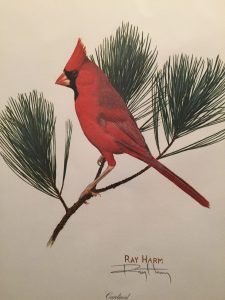
In February of this year, I spent my annual week of silence at the Abbey of Gethsemani in Kentucky. It was one of the last times I traveled before the lock down of Covid-19. One of the things I love to do at the abbey is watch the birds at the bird feeders in the garden. I take my tea and my journal and sit in the dinning room and watch out the window as the many birds come and go at the various feeders in the courtyard. Usually there are a couple of pairs of cardinals that come and go. But this year, Jesus gave me an ABUNDANCE of CARDINALS. There were at least 8 pairs of cardinals in the garden at a time!
I actually was blown away by this! I have never seen that many cardinal pairs in one place at one time! And never that many at the Abbey! God knew that I needed them! God knew that in 2020, I would need the ABUNDANCE of CARDINALS !
Long before Covid-19 shut down our lives in so many ways, I was shut down and grieving. Grieving the loss of compassion in our world. Grieving the conflict that was growing everyday in our country and around the world…the us vs them, the red verses blue, the racial hatred, and the broken systems in our country that harm the poor and working classes on a daily basis. As an enneagram 7 who hates conflict, I was, and am exhausted by it all. And as one who is good at reframing things and always seeing the bright side, the good in things, this political season in America has been down right depressing and impossible to reframe. So Jesus knew that I needed an ABUNDANCE of CARDINALS! I needed these bright red reminders of the Hope of God! The power of Jesus and the love he has for me! This was a bold love letter in the form of birds. Jesus reminding me that in his world, in his economy, there is always enough! And there is even an abundance!
Since February, during this season of lockdown, in the land of Covid-19, I’ve appreciated God’s timing in sending by a cardinal when I’ve needed him most. While walking the dog, or working on my computer, the bright speck of red has caught my eye and reminded me that I am not alone. The Holy Spirit, in the form of a simple Cardinal, is near, close by, waiting for me to take notice.
Today I am sitting on my porch writing this while watching a pair of cardinals eat birdseed from under my feeder. One of the reasons I bought this house was because there was a pair of cardinals in the neighborhood. Out of the multiples of houses we looked at when we we moved back to Nashville, ONLY two houses had cardinals in the yard. And this was one of them.
Today I sit here in the midst of a week of more sorrow and much darkness, in a week of protest and outrage over more death and violence towards black people by police. In the midst of the sorrow of so many dead, so many suffering due to job loss, the illness itself, and all the uncertainty caused by the pandemic.
The pair of birds at my feeder, reminds me of the ABUNDANCE of CARDINALS. The red birds remind me of God’s abundant love and hope. The birds remind me that I am not alone and God really is in control.
Maybe you need this reminder today too. Maybe you, too, need THE ABUNDANCE of CARDINALS!
In this season of Pentecost, maybe you need a bright red bird or a bright red flower to remind you of the power and action of the Holy Spirit to CHANGE THINGS! To TRANSFORM THINGS.
What things are symbols of hope for you? Have you ever thought that a bird or a butterfly or a feather might be a sign for you?
We all know about the symbol of hope in a rainbow, maybe Jesus has something special just for you!
Ask him to show you what that symbol is!
Maybe it’s a song or a beautiful sunset.
May it’s the flame of a fire in fireplace or the wick of a candle.
Maybe it’s the taste of a warm chocolate chip cookie or the smell of a freshly baked loaf of bread,
Or the sound of a child laughing
that is your symbol of HOPE.
Take time to reflect on what things remind you and bring you HOPE.
Receive the gift of Hope that this brings!
In this season of Pentecost, allow the Holy Spirit to surprise you with symbols of hope and love in the days ahead.
Pay attention. Notice. And TRULY Receive the gift! I pray that you will feel and find joy and hope, just like the Abundance of Cardinals.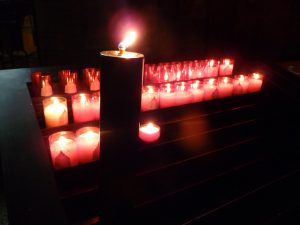
©lillylewin and freerangeworship.com
As an Amazon Associate, I receive a small amount for purchases made through appropriate links.
Thank you for supporting Godspace in this way.
When referencing or quoting Godspace Light, please be sure to include the Author (Christine Sine unless otherwise noted), the Title of the article or resource, the Source link where appropriate, and ©Godspacelight.com. Thank you!

